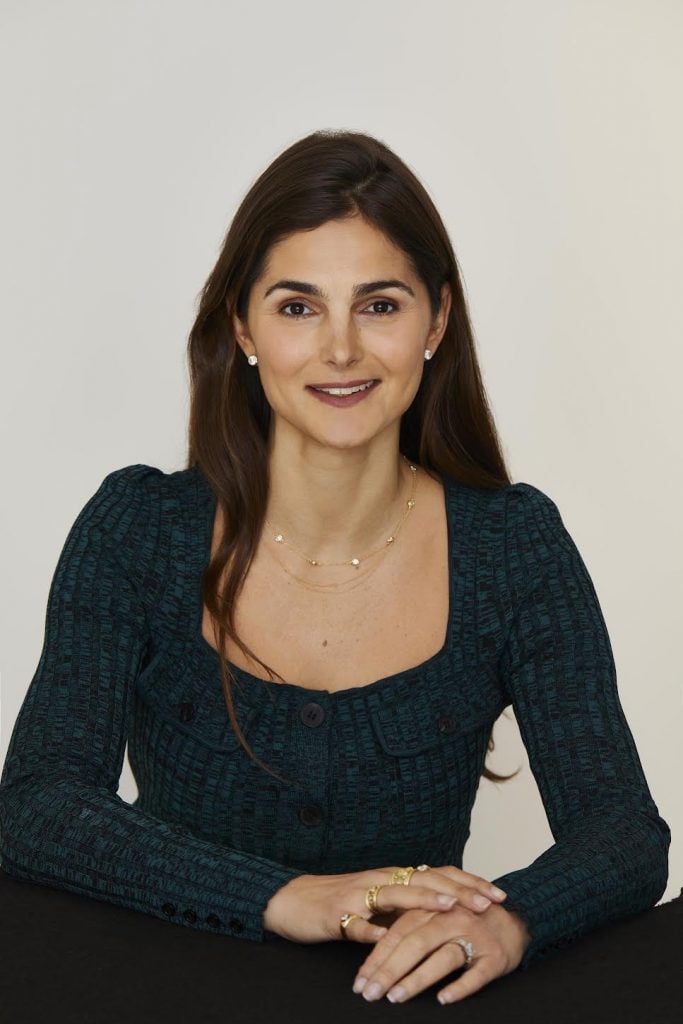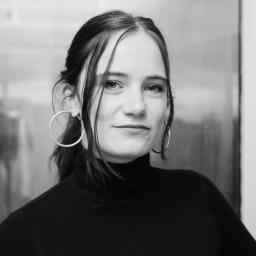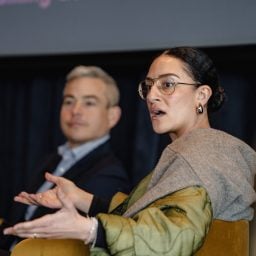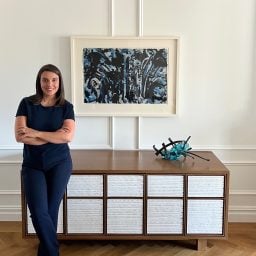I caught Brooke Lampley at a good time.
Two weeks after May’s auction marathon in New York, when Sotheby’s raked in over $1 billion, the house’s chairman and worldwide head of sales for global fine art had finally had a weekend to head out East, and returned freckled and relaxed, sipping an iced green tea at their in-house Sant Ambroeus.
“Had you asked me [if I’d had time to relax] on the Monday after sales, I would have been testy,” she said. “I lost three weeks of my life, but no, I feel better now.”
It’s been a little over a year since Lampley and her colleague, Mari-Claudia Jiménez, were tapped to lead Sotheby’s global fine art division following the departure of Amy Cappellazzo, whose name is attached to the work “rainmaker” so often you might think it is on her birth certificate.
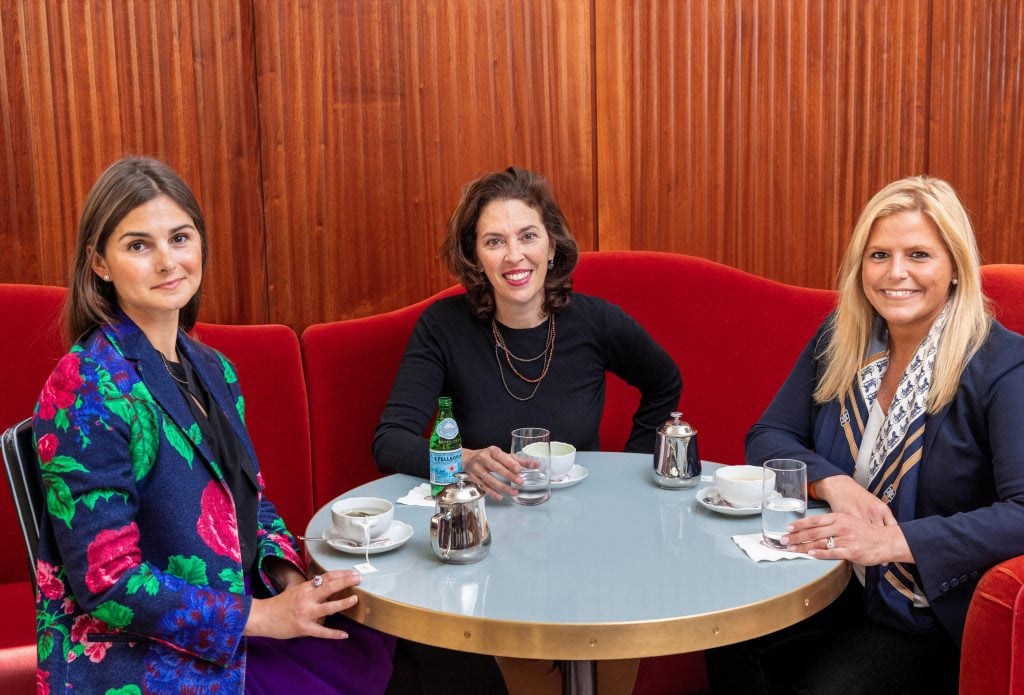
From left: Brooke Lampley, Amy Cappellazzo, and Mari-Claudia Jiménez at Sotheby’s Sant Ambroeus cafe. Photo by Julian Cassady for Sotheby’s.
Lampley and Jiménez began their new roles nearly two years after telecom billionaire Patrick Drahi took the auction house private. “The transformation has been dramatic,” Lampley told me. At the time, she was working in the Impressionist and Modern art department after being poached from Christie’s in 2018. “I know he’s a famous cost cutter, and ‘lean and mean’ is definitely part of the culture, but so is adventurous risk-taking.”
Some of those risks included a reconfiguration of the Imp-Mod and contemporary departments into three separate categories: Modern, contemporary, and “The Now.” As part of the reorg, Sotheby’s anointed three new sale heads with their own respective teams and placed an overarching focus on expanding the house’s collector base. The company also expanded its art-finance arm, leaned into the Metaverse, and opened pop-ups in the Hamptons, Palm Beach, and Monaco—efforts that seek to make Sotheby’s a vertically integrated luxury consumer business, not simply a purveyor of art and antiques.
These changes likely played a role in helping the house secure the Macklowe collection, which last month became the most expensive private art collection ever go to auction.
One of Lampley’s strengths during our conversation was her ability to articulate long, intelligent-sounding responses to my questions without really answering them. (The only time she got truly tight-lipped was when asked if there are any updates on the plan to take Sotheby’s public again: “No news on that front.”)
Prompted to describe what the pitching process was like to land Macklowe, she broke eye contact and answered carefully. “Going back to the earliest days of winning consignments in my career at much lower price levels, there are certain consistent themes,” she said. “Like being sincere, being enthusiastic, being informed, and sharing things that you’ve learned about the work.”
The two-part sale—which Sotheby’s reportedly secured with a hefty guarantee—netted a truly staggering $922 million. “Everybody takes great pride in the things that they own, whether they acquired them themselves, or they inherited them…. The more that you can tell what makes it special, you’re not only informing them, but you’re demonstrating to them how you’re going to sell it to a client,” Lampley explained. “The sales pitch, in that sense, is somewhat indirect. It’s a demonstration.”
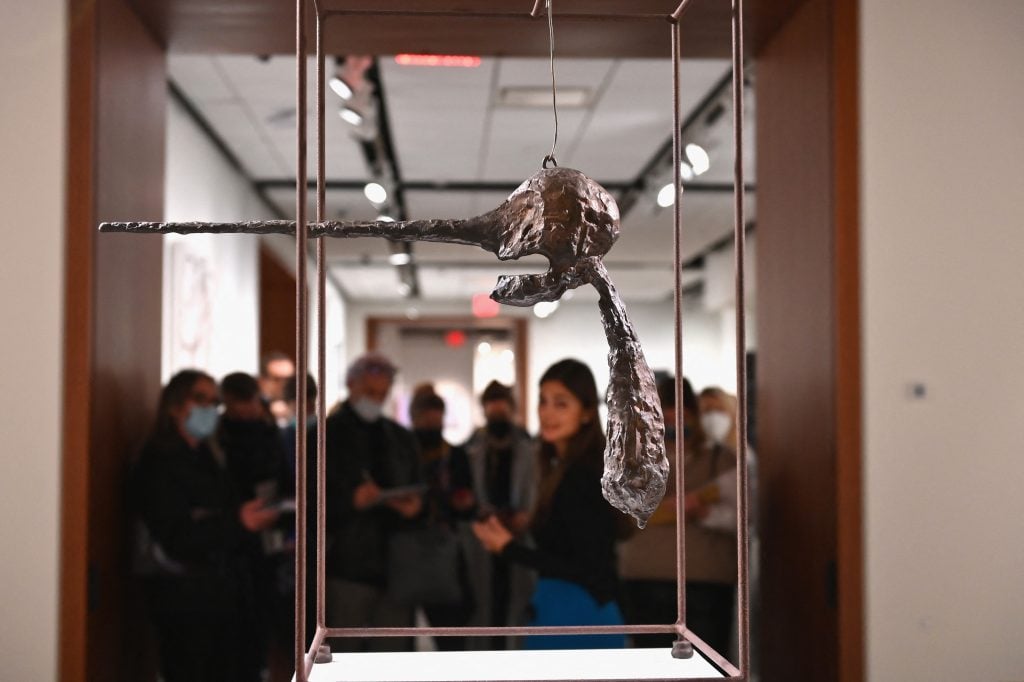
People look at Alberto Giacometti’s Le Nez, part of the Macklowe Collection, at Sotheby’s on November 5, 2021 in New York City. (Photo by ANGELA WEISS/AFP via Getty Images)
Success seems to come frequently to 42-year-old Lampley. She described herself through a smile as type A and competitive—I immediately realize that she is the exact type of person who would never choose someone like me for a lab partner.
Jiménez said of their collaboration, “Brooke and I have a strong partnership that is rooted in our deep mutual respect of each other… We are committed to recognizing and investing in our talent so as to open doors to new possibilities for the team. And we’ve already seen tremendous dividends.”
Lampley got hooked on art as a kid, growing up in two cultural capitals, New York and London. Her mother, a painter, would frequently take her to museums. “I had no burden of convention in my life,” she said. She studied art history at Harvard, and immediately moved on to a PhD program at Yale with the intention to become a curator of Modern art. But she dropped out at 23.
“I felt like I was treated as kind of quaint and adorable, because I wanted to do Modern art. People would be like, ‘What? We’ve talked about Picasso.’ And I’d be like, ‘Yeah, well, we’ve talked about Michelangelo, too.'”
A stint at the National Gallery of Art in Washington confirmed that the slower rhythm of institutions and academia wasn’t for her. “At that age, my peers were working at investment banks in New York, and working all hours, and then partying all hours,” she said. “That was the pace that I expected for my life. I had a lot more to give, and I felt like it wasn’t being utilized.”
Her competitive side likely comes from her father, Jim Lampley, the famous sportscaster who narrated HBO’s World Championship Boxing for 30 years, notably coining the catchphrase, “It happened…IT HAPPENED!” upon George Foreman’s boxing comeback in 1994.
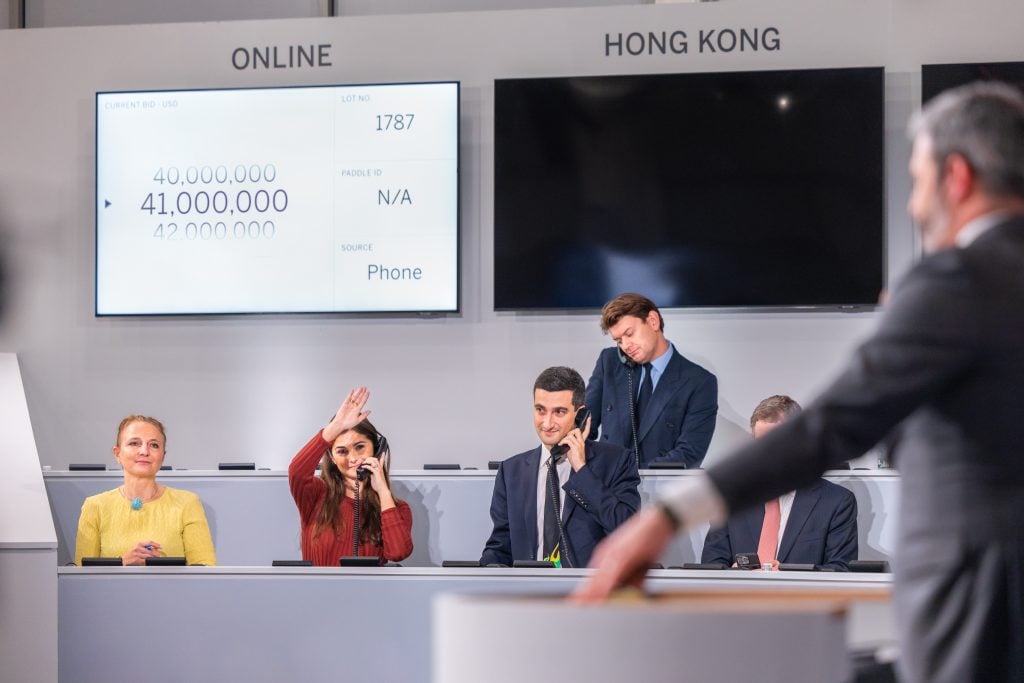
Sotheby’s chairman Brooke Lampley on the phone for the winning bid of the Constitution at Sotheby’s New York. Photo courtesy of Sotheby’s New York.
Many joke that witnessing an art auction can feel like watching a sports game, and certainly no sale in the history of Sotheby’s felt more like one than last November’s sale of the U.S. Constitution, which gave Lampley her 15 minutes.
“I was grateful for everyone’s forgiveness,” she said, half-joking. During the sale, Lampley became something of an internet sensation after she ended up facing off against ConstitutionDAO, a ragtag group of Bitcoin enthusiasts who raised tens of millions of dollars to buy one of the first printings of the U.S. Constitution and display it democratically “for the people.”
Lampley was bidding on behalf of, for lack of a better term, the man: hedge-funder Ken Griffin (a longtime client), who ended up beating out the DAO with a last-minute phone bid of $43.2 million. It felt like a metaphor for the one percent quashing the everyman—and Lampley became the scapegoat.
“There were some vicious memes, but they were still really funny,” she recalled. The jokes ranged from harmless fun to flagrantly misogynistic. “I refer to it as my peak fame. I think this is the greatest fame I will ever achieve in life, and that’s just fine.”

Message on the landing page of the ConstitutionDAO during the sale.
Lampley isn’t a fan of the art world’s fast and furious incorporation of digital art into the canon. (“I don’t fundamentally prefer to experience art through a screen,” she said.) But her new position requires her to spend time with the hot and the new alongside the Modern masters she fell in love with. Faced with dizzying demand from under-40 collectors, often in Asia, Sotheby’s is now offering work by 20-something artists in prominent evening sales alongside Monet and Matisse.
“There’s a lot of appreciation for art that does something new in a developmental stream,” Lampley said. “I think it’s perfectly natural.”
For now, all this change is motivating to Lampley. “I refer to this period of my life as the ‘yes’ period,'” she said. That means yes to clients demanding to meet after hours, yes to rapid internal change, and more.
Now that the spring auction season is over, the main thing she’s looking forward to is having time to go see art again. Of course, she has a very organized list on her phone of shows to see: the Louise Bourgeois and Winslow Homer exhibitions at the Met, the new Francis Bacon show at Skarstedt.
“Really, I’m mostly just proud of our team,” she said. “I couldn’t have anticipated being this successful over this period of time.”
